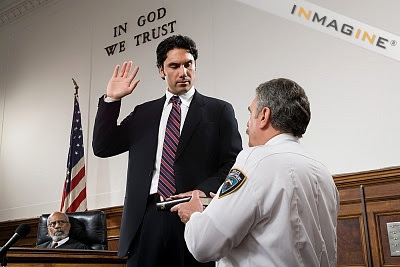Perspective Convergence
Two parallel lines are perceived to come closer together as the distance increases from the observer. As can be seen in this picture, the space between the two parallel yellow lines decreases as the perceiver sees the lines from a distance. This pictorial cue aids in an individual's perception of depth.
Texture Gradient
It can be observed from this picture that the tiles seem to group closer together as the distance increases from the observer. Although the tiles are all of identical size, and are spaced and arranged in the same way, the further tiles appear to be more closely packed together. This pictorial cue helps a perceiver tell the depth of an object from where he or she views it.
Relative Height
An observer can tell which of the two lamp posts is farther from his or her position using relative height. In this perception cue, bases of objects are indicators of distance. Specifically, when below the horizon, an object with a base higher than the base of another object is perceived to be more distant from where the observer is situated.
Convergence
Convergence is an occulomotor cue that gives an observer information on the distance of the object being focused on. When the object being attended to nears the eyes, the observer can feel the inward movement of their eyes when trying to maintain focus on the object.
Occlusion
This picture shows a scene where the fence is partially obscuring the bust sculpture of Jose Rizal. This may then indicate that the fence is front of the sculpture because of the figure being partially blocked. The cue of occlusion only indicates relative distance, as the absolute distance between the fence and the bust cannot be determined from the picture.
Familiar Size
In this picture, a hand so big that it manages to wrap around a person can be seen. In reality however, an observer would be able to discern that the hand is not actually holding the person, rather it is simply closer to the observer's field of view, which creates this illusion. More importantly, the observed possesses previous knowledge that hands are a lot smaller than a person's torso, and that one hand cannot possibly restrain a person completely. Knowing information and being familiar about the sizes of objects based on perceptual experiences is categorized as a perceptual cue called Familiar Size.
Relative Size
In this picture, one can see that the girl in red appears smaller than the girl wearing white. This means that the "smaller" girl takes up less of an observer's field of view; however, based on previous knowledge, we know that the "smaller" girl is in fact almost the same height as, or even taller than the "taller" girl. Despite knowing that the girls are not of equal height, the difference in the distances they are standing at makes the information unclear.
Visual Angle
Although this picture may also be another example of the cue of Familiar Size, it may also demonstrate a principle in size perception known as the visual angle. The visual angle depends on both the size of the object and its distance from the observer. Because closer objects have a larger visual angle, they will occupy a larger area in an observer's field of vision. So even with the knowledge that a hand cannot possibly be large enough for a person's entire body to rest on, because they both have the same visual angle, it now appears that the nearer hand is of an appropriate size to able to support the farther person.
Deletion and Accretion
This video clip shows that as the observer moves sideways across a scene, some objects become covered or obscured, which is called deletion, while other objects become uncovered and come into view, or accretion. It is a form of a motion-produced cue that occurs when overlapping surfaces appear to move relative to one another. So as the observer moves across the hall, the blackboard and teacher's desk initially come into view. As the observer continues moving across, the armchairs then come into view, while the blackboard and desk are no longer to be seen.
Source: www.cameras.about.com
Atmospheric Perspective
In this picture of the Taal Volcano, one can see that the volcano itself and the mountain behind it appears less sharp than the weeds near the bottom of the picture. The mountain behind the volcano also appears to have a bluish tint to it. Because observers look through more particles and perhaps fog in trying to view the rather distant mountain, it appears less sharp and bluish.


















